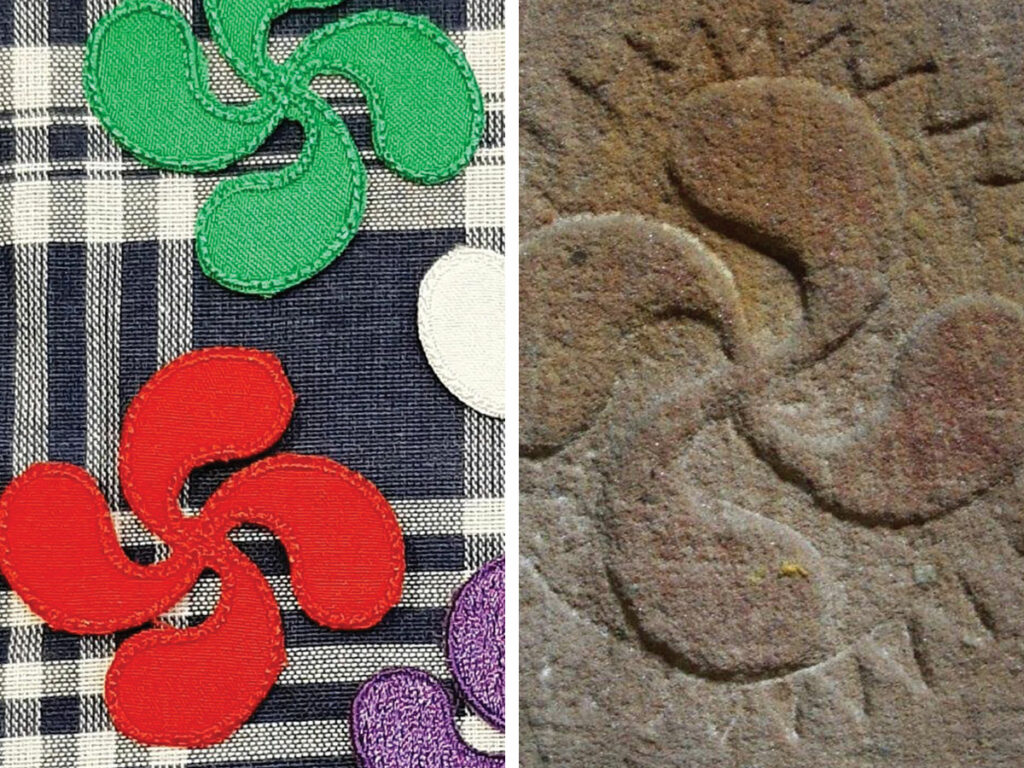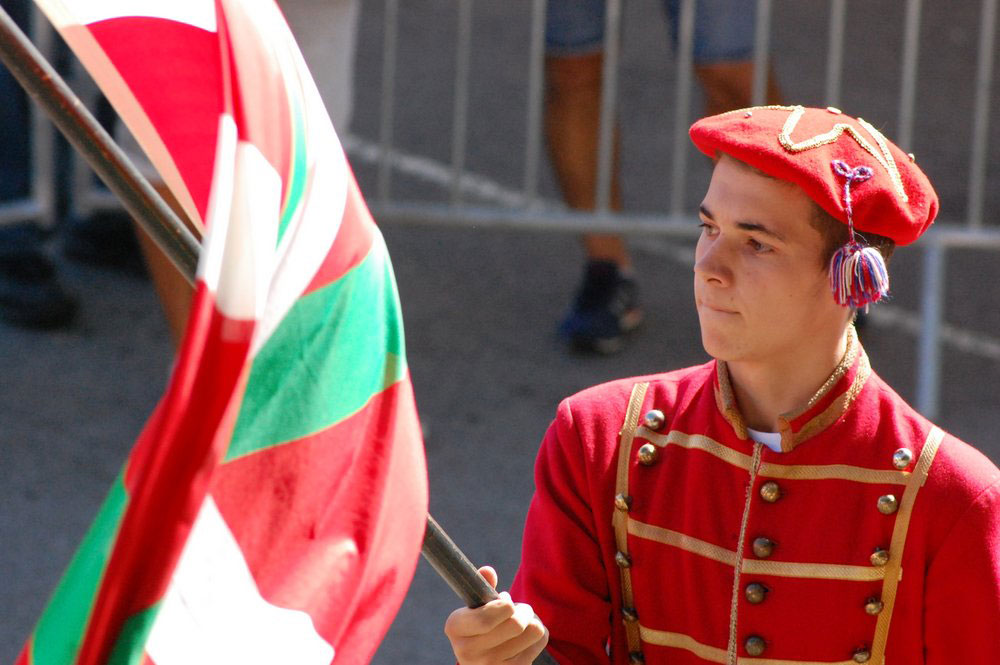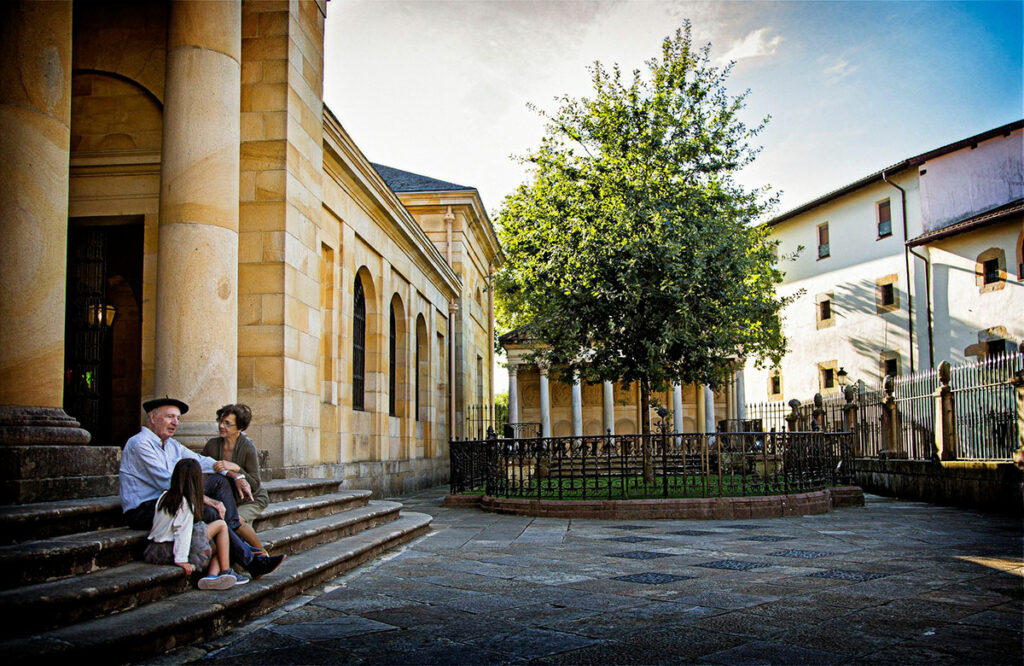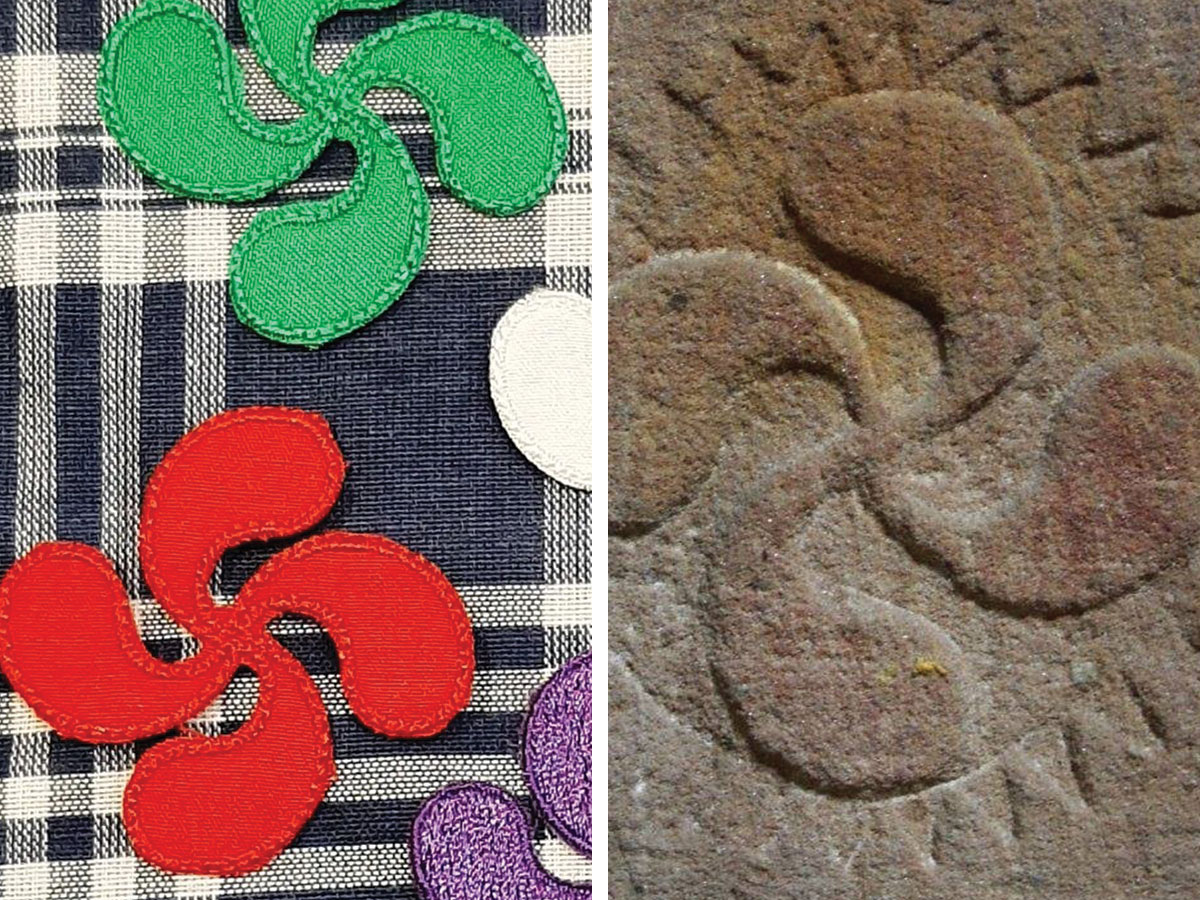The Basque Country is a region with a unique and distinct heritage built up over the centuries, and that’s evident in the popular Basque symbols.
The region has the last remaining pre-Indo-European language (Euskara) that dates back to prehistoric Europe. It’s also a place of unique traditions and culture. They are still evident today in everyday life such as Basque sports like Cesta Punta.
But through the Basque symbols, it’s also possible to understand a little more about this unique culture.
In this article, we’ll run through the most popular Basque symbols that you’ll likely see dotted around on a trip to Euskadi!
Popular Basque Symbols
Below are some of the most popular Basaue symbols that you will probably see dotted around on a trip to the Basque Country.
1. Lauburu (The Basque Cross)

The Labuburu is a very old mythological symbol. Its design features four heads, or arms, which move in an anticlockwise direction giving the symbol a sense of movement.
The name “Lauburu”, actually derives from two Basque words, “lau” meaning four, and “buru” meaning head.
The Basque cross symbol is common in European mythology, particularly amongst the Celtics. However the meaning of the symbol is somewhat debated.
Some say that the symbol represents the sun. Others argue that each “head” represents one of the four regions of the Basque country, united as one.
But whichever meaning you choose to believe, one thing that is accepted is that the Lauburu is a good omen.
In fact, when you travel around the Basque country, you’ll commonly see the Basque Cross carved in stone at the entrances to houses. It’s used to decorate wardrobes, jewellery, boxes and common on tombstones.
2. Ikurriña (The Basque flag)

The Basque flag (or ikurrina as it’s called in Basque) is one of the most important symbols in the Basque Country.
Whilst the flag doesn’t represent a nation-state, it does represent so much for the people of the Basque country
The Basques are a proud population, and the ikurrina is a symbol of their culture, land, history, sense of identity and represents all they have endured over the years.
The flag was created by Sabino Arana and his brother Luis Arana in 1894. Originally it was designed to represent just one region of the Basque Country (Bizkaia). However, after it was adopted by the Basque Nationalist Party, it quickly became the flag for the whole of the Basque Country.
3. Tree of Gernika

The Tree of Gernika was an ancient oak tree located at the headquarters of the ancient parliament of Bizkaia, in Gernika.
The Lords of Bizkaia used to meet under the shade of the oak tree to discuss matters concerning the region. Under the tree, they also swore to respect the liberties and the privileges of Basque people.
This led to the tree gaining symbolic representation of the history of Bizkaia and Basque society in general, associated with their fight for freedom.
The Tree of Gernika gained even more symbolic connection for the Basque people after the town of Gernika became the place of the first attack on civilisation in armed conflict by the Nazi’s during the Spanish Civil War.
As a result, the tree features in the arms of Bizkaia, amongst the arms of many small towns in Bizkaia. It’s used in the logo for the University of the Basque Country and even featured in an early version of the Athletic Bilbao logo.
The tree standing in the place today isn’t the original oak tree. It was replanted in 2004, after the old tree died of a disease. However, the old tree trunk is still visible under a pavilion at the Assembly House.
4. Eguzkilore (sunflower)

The sunflower or Carlina acaulis (Eguzkilore in Basque), is another popular symbol in the Basque Country.
It’s an emblematic symbol of Basque mythology that is believed to keep away bad spirits and protect the homes of Basque people.
It’s a flower on a wild thistle that grows in sunny, mountainous rocky flanks in Southern Europe. They are actually rare, endangered flowers and it’s strictly forbidden to pick them from the mountains!
It’s common to find the Eguzkilore at the entrance of homes, hanging on the doors in the Basque Country to keep the bad spirits away. They are also used as decorative features on door lintels and jewellery.
Basque Symbol FAQs
Below we’ve answered some of the most frequently asked questions about Basque symbols.
If you have any other questions that we’ve not answered in this post, feel free to drop a comment in the comments section!
The Eguzkilore or sunflower is a symbol of protection in the Basque Country. It’s an emblematic symbol from Basque mythology that believes the sun keeps away bad spirits.
For that reason it’s common for Basque people to hand an Eguzkilore on their door or entrance to their home in order to protect it.
